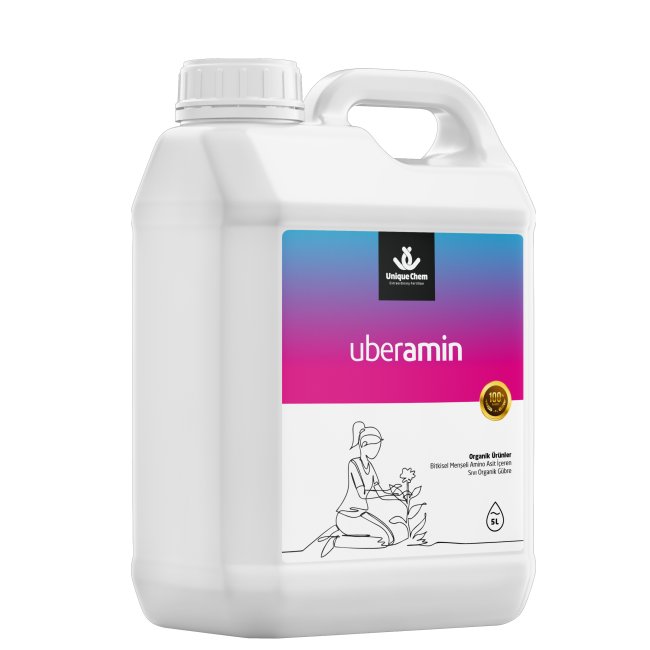Description
Sol Iron EDTA, 100% water soluble, excellent formulation with Fe 13% EDDHA chelation, maintaining its stability in a wide range
of Ph (1-9). Plants produce the nutrients and energy necessary for their development through photosynthesis. Light energy is
absolutely necessary for the photosynthesis process. Chlorophyll is the pigment responsible for capturing sunlight. The element
Iron (Fe) is necessary for the synthesis of chlorophyll pigment, which is responsible for the photosynthesis process.
Photosynthesis is the most important energy process occurring on Earth. Through photosynthesis, solar energy turns into food
in plants. Therefore, the production capacity of plants depends on the effectiveness of the sun. In iron deficiency; Light green
color and yellowing appearing on the plant leaves are observed. Initially, leaf veins are green and interveins are yellow. In
advanced deficiencies, all the leaves turn yellow and photosynthesis stops. Sol Iron EDTA maintains its stability in a wide pH
range and provides the best results with its low dosage and high performance compared to other iron-containing preparations.
| Guaranteed Content | (W/W)(%) |
| Water Soluble Iron (Fe) | 13% |
| Chelated Iron (Fe) with EDTA | 13% |
WHERE IT IS USED;
It is used to eliminate iron deficiency in all plants. Iron deficiency in plants may occur due to low levels of iron or alkaline soils that make it difficult for the
plant to absorb iron. Iron deficiency causes loss of productivity, development and quality in plants. Iron is an element necessary for plants to perform
photosynthesis. It plays a role in N and S utilization, hormones and chlorophyll biosynthesis. In case of deficiency, if used appropriately, the leaf color turns
green and the plant performs normal photosynthesis, increasing the product and its quality.
TIME OF USE:
Leaf should be used regularly according to the results of soil analysis and/or when the first signs of iron deficiency begin to appear and/or in intensive
agricultural practices. Applications are repeated when necessary.
USAGE:
It can be used with soil drip irrigation systems and other irrigation systems, taking the doses on the label as a guide. high pH
It should be used together with acidic fertilizers in soils. Authorized for applications in high pH soils and other options
Consult an expert. It can be applied safely to the leaves in recommended doses. It is suitable for use in soilless agriculture. solid medium,
It is applied by calculating the ratios by consultants who are experts in water and air cultures.
| Plant Name | Application Time | Drip Irrigation g/da |
Foliar Application g/100 L water |
| Fruit trees | 3 applications: After fruit set – Vegetative development period – Post harvest 1 application: 3 applications with an interval of 20 days after flowering | 400 – 800 – – |
150-200 |
| Banana | 3 applications: Repair time – Development period – 20 days after the 2nd application | 600 – 1.200 | – |
| Citrus | 4 applications: After flowering – After fruit setting – Fruit coloration period – After harvest | 500 – 1.000 | – |
| Strawberry | 3 applications: 4-6 leaf period – Fruit development period – Post-harvest | 300 – 600 | – |
| Vegetables | 5 applications: 4-6 leaf period – Development period – Every subsequent 20 days. Flowering period 1st application – 3 applications with 30 days intervals |
200 – 300 – |
50-100 |
| Cut Flowers | 5 applications: 4-6 leaf period – Development period – Every subsequent 20 days. Flowering period 1st application – 3 applications with 30 days intervals |
200 – 300 – |
50-100 |
| Green area | At 20-day intervals throughout the development process | – | 50-100 |
| Potatoes, Sugar Beets, Canola | 3 weeks after emergence – with 20 day intervals | – | 80-170 |
| Grains | Together with herbicides – second application after 20 days (it is recommended to reduce at least 35 L of water per decare) | – | 200-300 |
| Soilless Culture | Usage rates are determined based on expert consultant advice. | – | 200-300 |











